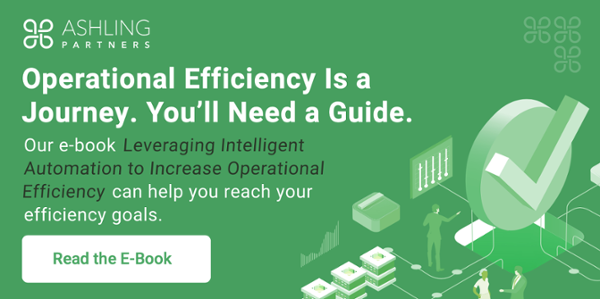An enterprise consists of thousands of tasks occurring every day. Many are repetitive, from data entry to reconciliations to support ticket responses. All these areas of inefficiency add up and are a drain on time, resources, and revenue.
Many organizations are seeking to eliminate these inefficiencies by adopting automation across departments, from sales to finance to customer support. Automation is becoming widespread, but a bigger challenge looms ahead: scaling automation programs.
In this post, we’ll dissect the journey to scalability in automation, including what scaling an automation program looks like, the issues most businesses face, and the solutions to these challenges.
Automation Is Mainstream, but Scaling Is Often Out of Reach
Automation isn’t a novel concept. Companies have been integrating automation into operations for years. Its value is evident with both robotic process automation (RPA) and intelligent process automation (IPA). Those businesses that employ automation champion its results, with 74 percent saying it helps their workforce be more efficient and another 59 percent noting cost reductions of up to 30 percent.
The proliferation of automation adoption continues to increase, with 67 percent of companies using it for end-to-end process visibility. These benefits are concrete and drive organizations toward accelerated digital transformation and operational efficiency.
However, an automation program that’s scalable and continues to deliver value is often elusive. The scaling part becomes an even more significant hurdle. Companies are reconsidering how to facilitate automation throughout the business, seeking easy, turnkey solutions like low-code process automation.
The reality in today’s climate is that automation is a necessity, not a nice-to-have. Labor challenges keep positions open longer, forcing everyone to do more with less. Costs keep rising and need efficiency to curb them, and systems create and manage more data every day. Plugging in automation here and there can deliver quick results, but the challenge of automation at scale remains.
What does it mean to scale an automation program?
What Does Scaling an Automation Program Look Like?
With any initiative, you need many pieces in place before you can scale.
In the case of automation, scaling is unique because it’s not a program resigned to only one department or type of function. At the enterprise level, scaling automation requires effort from many different parts of the organization.
Fundamentally, some of the tasks you can automate have similarities. However, for any automation initiative to succeed, you must optimize a process before you automate it. By doing so, you can build a sustainable automation program. However, such exercises can take time, and you’ll need guidance from experts to help with the steps. Let’s look at what this includes.
Steps to Take in Scaling an Automation Program
By following these steps, you’ll gain more insight and can develop a strategic plan for creating automation at scale.
Process Mining
Process mining analyzes logfile data and tracks business and IT processes to understand the “true” steps involved. It’s an unbiased, objective look at the workflow, which supports efforts to identify automation opportunities.
Center of Excellence
You’ll need to establish a Center of Excellence (CoE) so that the work group includes all critical stakeholders. This group provides direction and vision for the automation program. Creating a CoE is crucial because it offers a body to govern, maintain, and initiate change management. Automation in siloes often ends in failure and sets you back in scaling, and a CoE prevents this from occurring.
Automation and Business Goals
Another aspect of the journey to scaling is aligning automation with business goals. Those objectives could include achieving operational efficiency, accelerating digital transformation, providing more meaningful work for employees, reducing costs, or all these things. Automation without a goal behind it won’t deliver the expected value, so goal-setting needs to be part of your program.
Change Management
As noted above, the CoE should be the driver of change management. As you deploy more automation, you’ll need a strategy for this. The purpose is to get buy-in at every interval. Failure to do this and think holistically about your organization’s culture and readiness will impede scaling.
If you can move all these pieces into place and maintain momentum, you can set a course for scaling. Ideally, as a result, you’ll have automation running throughout the organization and continuing to deliver value.
However, you still may face some bumps in the road.
The Challenges of Scaling Automation Programs
What can you expect regarding challenges to scaling? These are some areas that can get in the way of scalability:
- Gaps in building the business case: Aligning automation to the use case is critical in developing the right processes.
- Lack of skilled resources: Companies often find they don’t have the internal bandwidth or expertise to scale a program. To alleviate this, they often turn to third-party experts.
- Disconnects between business and IT stakeholders: Communication and collaboration among these teams is vital. Without it, you’ll have competing agendas.
- Not getting buy-in across the board and failing to mold a new mindset around automation capabilities: You’ll need top-down support to scale, which will require some education and championing of the power of automation. This is another area where the CoE can assist.
- Complicated or unclear goals around what automation should deliver in terms of value: Define these early; otherwise, you may have too many targets to hit them all—or find you’re not aiming at a particular target at all.
- Failing to measure the progress of the program: As with anything in business, you need to track your automation program’s performance regularly.
- Losing momentum after pilot programs: Many initiatives never make it past this point for any number of reasons—no buy-in, no vision, no CoE, and more. The plan you develop must include how you’ll implement it once the pilot concludes.
- Not progressing from RPA to IPA: RPA is the base level of automation that uses unattended digital robots to take over manual, repetitive tasks. It’s critical for the foundation of your program, but you want to progress to IPA, wherein automation combines with AI to handle more complex tasks.
- The complexity of the automation: The more intelligent the automation, the harder it is to scale.
- System dependencies: Successful scaling requires capturing all the dependencies and context from all the disparate systems, with legacy ones often the most challenging.
- Data quality: If the data that’s part of the automation workflows isn’t accurate or clean, you’ll run into issues, as outcomes won’t be accurate.
Although these challenges may seem formidable, scaling automation is possible with the right strategies, tools, and experts.
Achieving Automation at Scale
Whether you’ve started your automation journey or not (or you’ve stopped and restarted), you can find a way to navigate the challenges and achieve scalability. With the steps outlined above, you can develop a scalable automation program by:
- Transforming the mindset of the organization to be automation-first and see it as a valuable tool that helps the company grow and supports employees. This goal-oriented approach provides a map of where you start and where you’ll arrive.
- Defining all the goals of automation across the enterprise and getting agreement from stakeholders on these, then determining how you’ll measure the goals.
- Focusing on your scarcest assets—time, people, and data—and how automation can turn them into abundance.
- Designing RPA programs that can extend across the enterprise, then looking for opportunities to inject IPA at the next level.
- Working with experts who can provide you with technology tools, advice, code development, and analytics.
- Building an agile CoE with the right voices to lead automation innovation.
Automation programs will constantly evolve as internal and external forces impact prioritization and needs. If you have the foundation and framework in place, you’ll be able to pivot as needed and sustain scalability.
To explore more about automation, scalability, and operational efficiency, download Leveraging Intelligent Automation to Increase Operational Efficiency.



